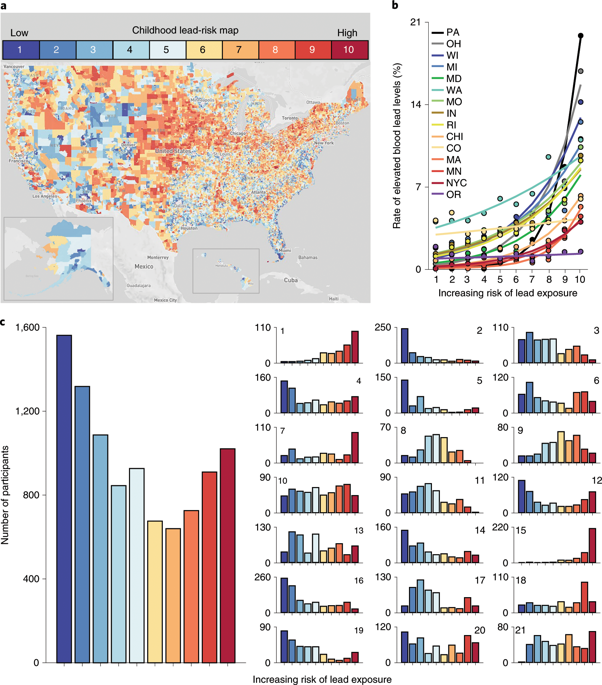Nature Medicine ( IF 58.7 ) Pub Date : 2020-01-13 , DOI: 10.1038/s41591-019-0713-y Andrew T Marshall 1 , Samantha Betts 1 , Eric C Kan 1 , Rob McConnell 2 , Bruce P Lanphear 3 , Elizabeth R Sowell 1

|
Socioeconomic factors influence brain development and structure, but most studies have overlooked neurotoxic insults that impair development, such as lead exposure. Childhood lead exposure affects cognitive development at the lowest measurable concentrations, but little is known about its impact on brain development during childhood. We examined cross-sectional associations among brain structure, cognition, geocoded measures of the risk of lead exposure and sociodemographic characteristics in 9,712 9- and 10-year-old children. Here we show stronger negative associations of living in high-lead-risk census tracts in children from lower- versus higher-income families. With increasing risk of exposure, children from lower-income families exhibited lower cognitive test scores, smaller cortical volume and smaller cortical surface area. Reducing environmental insults associated with lead-exposure risk might confer greater benefit to children experiencing more environmental adversity, and further understanding of the factors associated with high lead-exposure risk will be critical for improving such outcomes in children.
中文翻译:

铅暴露风险和家庭收入与儿童大脑结果的关系
社会经济因素影响大脑发育和结构,但大多数研究都忽视了损害发育的神经毒性损伤,例如铅暴露。儿童时期的铅暴露在最低可测量浓度下会影响认知发展,但人们对其对儿童时期大脑发育的影响知之甚少。我们检查了 9,712 名 9 岁和 10 岁儿童的大脑结构、认知、铅暴露风险的地理编码测量以及社会人口特征之间的横断面关联。在这里,我们展示了来自低收入家庭的儿童与来自高收入家庭的儿童相比,生活在高铅风险人口普查区的负相关性更强。随着暴露风险的增加,来自低收入家庭的儿童表现出较低的认知测试分数、较小的皮质体积和较小的皮质表面积。减少与铅暴露风险相关的环境损害可能会给经历更多环境逆境的儿童带来更大的好处,进一步了解与高铅暴露风险相关的因素对于改善儿童的此类结果至关重要。









































 京公网安备 11010802027423号
京公网安备 11010802027423号